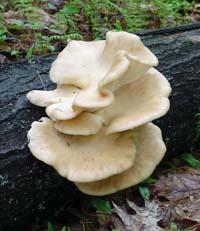The genome of a edible fungus first appears

Antonio Gerardo Pisabarro de Lucas, Professor of Microbiology at the Public University of Navarra, leads an international project to sequencing the genome of the ear worked. Other groups of researchers participate in this project.
The ear worked, Pleurotus ostreatus, is the first edible fungus to be sequenced. This fungus is rich in vitamins and proteins. It can also be used as a research model of the CO 2 cycle. It is also widely used in bioremediation --biodegradation of contaminants -. For all these reasons, the US institute of genomics (Joint Genome Institute, JGI) has chosen to sequence the genome of this fungus.
It has many other properties. They say that eating this mushroom reduces cholesterol levels and is also anticancer. However, it has not yet been determined which genes are responsible for these properties so beneficial to health.
The developed ear is used not only as food but also for the manufacture of paper paste, cosmetics and the pharmacological industry, among others. In addition, this fungus can grow industrially.
Many years of work
The Genetics and Microbiology group of the Public University of Navarra has been researching since 1994 the genetic material of the ear worked.

During all this time, the genetic bases that make the sequencing project viable have been established. Approximately 350 thousand pairs of ear genome bases have been sequenced, 1% of the total genome. Although it looks like a small number, it is significant to know how many genes are in the genome and how they are willing.
The genome of the ear worked has 70 million pairs of bases distributed in two equivalent copies. This fungus, like man, has a double copy of each chromosome. However, to sequence the entire genome, 280 million base pairs will be analyzed, as each gene must be read several times to ensure good results. It is similar to a complex text, you have to read it again and again to make sure there are no errors.
To imagine the measure of all this, Professor Pisabarro puts an example. Suppose each pair of bases is a letter, 70 million letters would be equivalent to the text of 11,500 pages. If the pages were normal folios, if placed online they would be more than 3.5 kilometers in length. If these letters are placed in a single line, they would reach 141 kilometers away. The fungus genome has two games, so each game would have 6,000 pages. In total, experts estimate that there are about 12,000 genes. That is, two genes per page. The main job will be to determine where each of these genes begins and ends, what they do, and how they do it.
70 million pairs of bases to order
Laboratories at the Universidad Pública de Navarra will isolate the DNA from the cultured ear and send it to the genomic sequencing institute. The American institute of genomics will be responsible for performing sequencing and computer analysis. In approximately one year, JG will have the first reading of 70 million letters of the genome. Subsequently, the laboratory of the Public University of Navarra will be responsible for ordering the sequenced sections and coordinating the rest of the project tasks.
All this information resulting from the sequencing will be distributed among all the laboratories of the Public University of Navarra participating in the project, in order to identify each of the genes that make up the elaborate ear, that is, to analyze the genetic composition of your organism.

To finish the project, the reading of the genome will be completed and the indications of the genes will be perfected. Once the project is completed, all this information will be made available to the scientific community.
And all this information, why? Perhaps more than one asks. The Earth lived about 3,000 million years ago. The DNA of this fungus that will be isolated, like the DNA of any other living, has evolved in 3,000 million years. Therefore, its genome has a history of 3,000 million years, and the goal of sequencing is precisely its reading.
In addition, reading the history of the cultivated ear genome and its comparison with the history of other genomes already sequenced or sequenced - the human being, animals, plants and microbio- will allow us to obtain a more global and enriched vision of the evolution of life on Earth.





